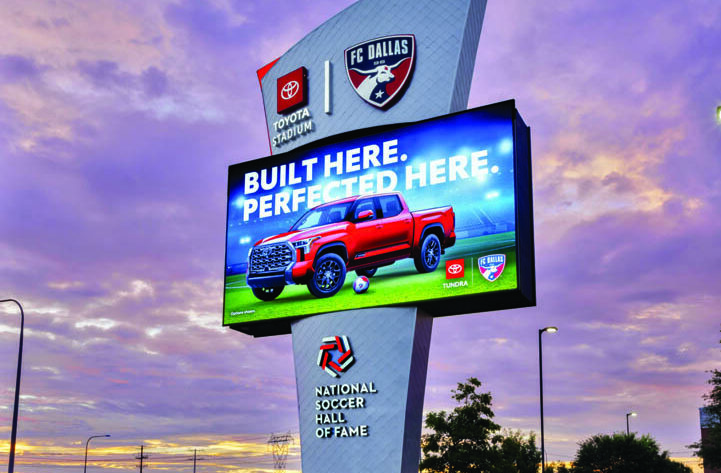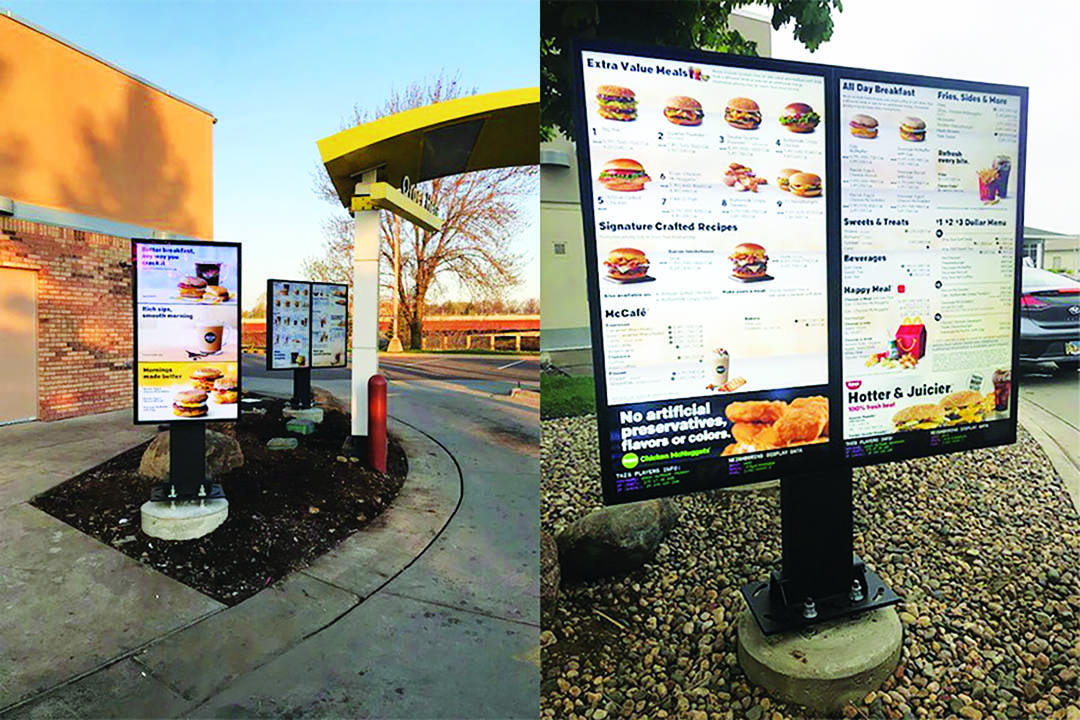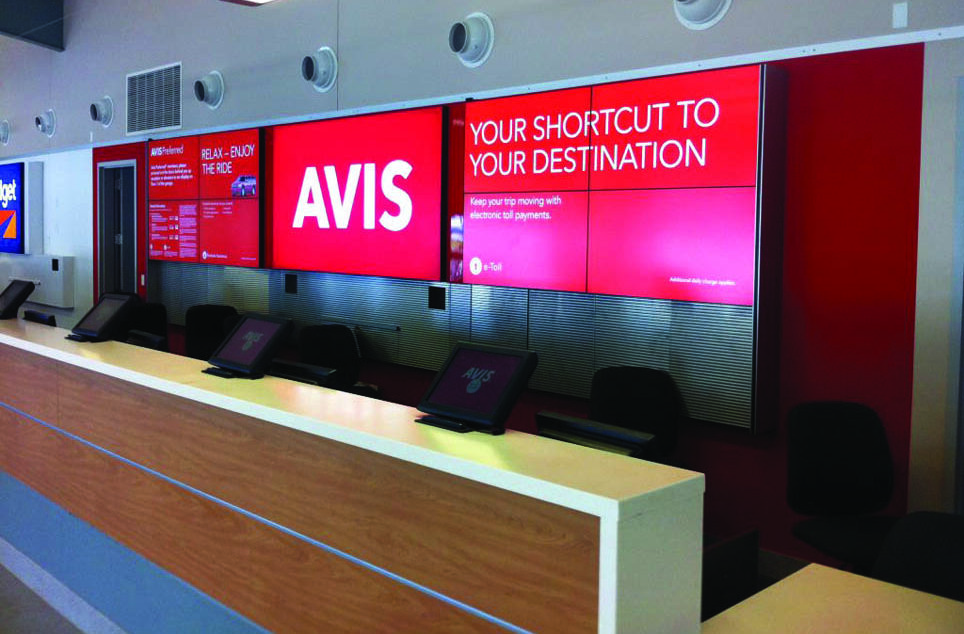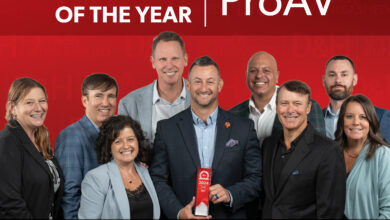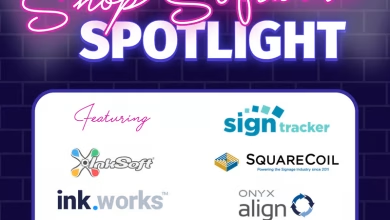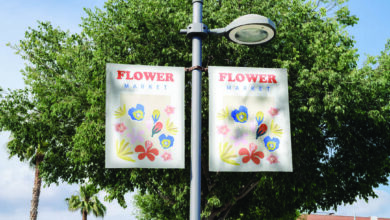As you look around at your competitors and the current business climate, are you scratching your head about ways to add revenue and value for your clients? If you have a small- to medium-sized shop, you might feel that you have maxed out your core competencies. You may have total confidence that you and your team have squeezed every drop of profit from what you do best, whether that is signage, banners, corporate apparel, embroidery, promotional products, vehicle wraps, or wide-format printing.
If you are looking for options, consider providing LED displays to diversify your product and service offering.
I was honored to have a comprehensive article on LED displays featured last year on the July 2023 cover of GRAPHICS PRO. Check it out for more technical details, statistics, why they are beneficial to your customers, and how LED displays are so much better than static signs for grabbing attention.
In this article, I will focus on how to enter this market when you don’t have the expertise or experience since this might be a major leap of faith from what you know best. We all must start from some point. I can attest that focusing on digital signs, whether indoor or outdoor, on-premises or billboard (or even sports displays) can help your company grow rapidly. If your typical average sale today is $1,300, you can easily expect an exterior digital sign system be 30 to 40 times higher.
Who are your target markets for electronic message centers, digital menus, and reader boards? Churches, schools, convenience stores, stadiums, banks/credit unions, multi-tenant shopping, malls, restaurants, fast food, auto repair centers, car washes, and auto dealers are industries ripe for these products.
You have long-term relationships already within these vertical markets. In today’s world, people have less time, and they have broader areas of responsibility than ever before. If they can deal with one company (and someone they like and trust) it makes their job easier. While you should make cold calls when you decide to offer digital signs, you may be surprised that your first sales will be “warm calls” to people open to your new offering.
Supplier collaboration
There are many advantages of collaborating with the primary domestic suppliers of LED displays. Their manufacturing facilities provide tours and training. These firms generate high-quality products, have great customer service, plus exhibit a proven history with the sign industry, and may offer content options and/or leasing services for your clients.
They also help support the local and state sign industry associations where you are an active member. (If you are not in a regional or national sign association, I encourage you to join one and let your voice and participation be part of the industry. One of the most rewarding times for me was serving on the boards at the state and local chapter levels.)
Having sold programmable signs since 1985, I believe the greatest advantage of partnering with the primary suppliers of LED displays is access to the companies regional representatives. They are knowledgeable, can provide demos of various resolution options via their company truck or trailer, and they are excellent at driving the sales pitch to your client on your behalf. The rep will train you and your install team, they will bring preloaded client logo and marketing content to the demonstration meeting, and they can create digital movie files on your artwork to wow your customer electronically. They can also provide a traffic analysis study to show exposures on a particular road where the display will reside to show the ROI versus other media buy costs. These people are invaluable in helping you make the sale.
Your wholesale sign component supplier(s) may also have digital sign options that they have vetted and even stock in modular form if time is a consideration. Your vendor contact can help guide you through the basics of these easy to install and quick turnaround systems.
Working with artists
There are freelance artists who can create digital sign designs if that is not in your wheelhouse. They can provide a title block on the artwork that shows your company and logo and any other signs that might be part of the same project. Plus, they can provide revisions as needed as you and your client explore the best visual solution.
Do not forget to add an artist copyright statement on your artwork; it is important. Your client is less likely to shop your unique design to your competitors if they see a proprietary statement giving you legal protection. In my experience, our industry has done a disservice by offering free designs for custom signs only to see their work created by some other company. You can mitigate that from happening with an intellectual property statement and/or by simply charging for your design and giving a full credit of the cost against the sign bid if your proposal is chosen by the client. What other industry gives away $500-$1,500 worth of artwork for free? Do not fall into that time-consuming, frustrating, and expensive trap.
There are wholesale fabrication firms that can manufacture from this artwork and ship or deliver the finished sign to you (if your firm can offload a large sign) or your chosen subcontractor. Do not forget to build in these transportation/handling costs in your bid.

LED installation
If your business does not have an install team (and in some cities and states, they must be licensed), do not fear. There are many subcontractors in the sign industry that can provide installation of the digital sign on your behalf. They can research the existing sign ordinance to give your artist the guidelines of square footage, overall height, digital sign use specifics, etc. They can pull required permits for you and coordinate the foundation drilling, piers, and install of the sign turnkey. Your digital sign representative may be able to provide contacts for this work if you do not have any experience or the requisite equipment or personnel.
No doubt you have heard of the idiom “close only counts in horseshoes and hand grenades (and nuclear bombs).” In our industry, your client often will mistakenly evaluate your proposal against a competitor’s and think “It is close enough,” and decide based on that loose perspective. While this is a sales approach issue, it is important to point out and one I learned the hard way many years ago.
Pricing
In pricing signs, the selling price is driven by many things: size, height from grade, components, face graphics, quality, raw materials, type of illumination, etc. But a central cost driver is square footage for most simple square or rectangular static cabinets when evaluated by an estimator.
In digital signs, resolution plays a big part of the cost. The lower the number (i.e., 6mm or 8mm) the more expensive it will be than a 16mm or 19mm. A small pixel pitch packs more LEDs (like an 8mm) and thus has high resolution and a sharper image. At 16mm, the resolution is much lower and grainier. Why is this important in selling digital signage?

Your sign design probably has a static sign cabinet and an electronic message display. As a collaborative salesperson, you must educate your customer on resolution and square footage especially if they are going to get competitive bids from other companies. It becomes critical that for a fair assessment of price, the client understands that “close enough” will not work.
I once provided artwork and a proposal for a 4′ X 12′ wall sign at the request of a local golf cart company. This was the specific size they wanted, and I verified it would fit perfectly. It was a simple internally illuminated sign with a polycarbonate face with vinyl copy.
I even provided a letter-size distance chart to show how far his sign could be seen on the highway where it was located.
When I followed up two days after I presented the sign and price, the owner indicated he liked our design best but gave the project to my competitor over price. I knew it was a competitive proposal so I asked if he could share what he purchased. (Always ask so you will learn why you lost a sale.) He said he went with the other sign because it was $200 less and “close” in size.
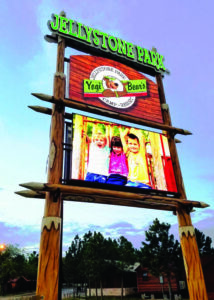 I discovered that he purchased a 3′ X 9′ sign. My design was 48 square feet; he bought a sign that was 27 square feet. In his mind, they were “close enough” to warrant savings of $200. My competitor did not provide him what he asked for; he provided something smaller knowing that it would be cheaper. I asked the owner to let me price out a 3′ X 9′ but he’d already given a deposit check to the other company but thanked me for my proposal.
I discovered that he purchased a 3′ X 9′ sign. My design was 48 square feet; he bought a sign that was 27 square feet. In his mind, they were “close enough” to warrant savings of $200. My competitor did not provide him what he asked for; he provided something smaller knowing that it would be cheaper. I asked the owner to let me price out a 3′ X 9′ but he’d already given a deposit check to the other company but thanked me for my proposal.
I decided to price out the 3′ X 9′ anyway. I sent him the revised quote. My price was $270 less than what he paid for the same size sign. It was not the bargain he thought it was. He called me and asked if that was a typo. I had to explain to him that signs are based on square footage, and he was a victim of thinking “close enough” saved him money. My 48 square foot sign was 44% larger than the one he bought! Guess who sold him his future 4′ X 12′ sign five years after that expensive education? Plus, he bought his logo shirts, promotional giveaways, and other banners and signage from our company. The added size made the sign’s graphics very visible on a road that was 55 mph. You can lose a battle but sometimes you win the war.
In a digital sign, 6mm and 8mm are close enough, correct? No, there is a marked difference in resolution and thus price. The moral of the story is to ensure everyone is quoting the same thing. Close is not enough in the sign world.
Do not let fear hold you back. Take the leap of faith of selling digital signs to make your company indispensable to your customers. Let that lack of knowledge or expertise drive you to prepare and learn. Take that emotion and let it drive you to take a chance. It will help you find answers and transform fear of the unknown into power. The added sales and profits will be worth it, and it will help provide the added value for the day you decide to sell your business.

